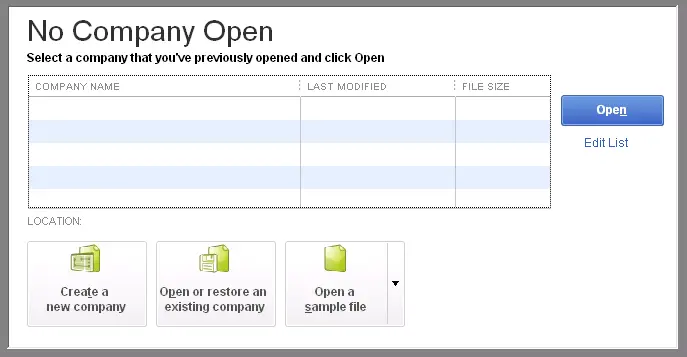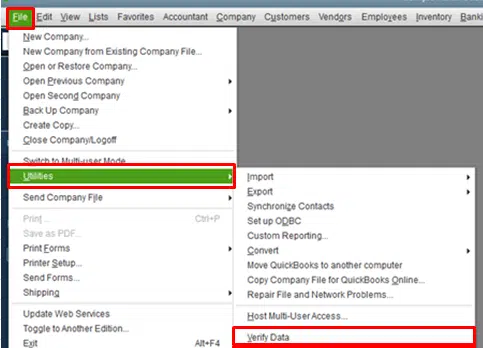Recover lost data with QuickBooks Auto Data Recovery
Auto Data Recovery (ADR) is a valuable composite
feature in QuickBooks Desktop that allows you to retrieve important data in
case of corruption. Although the recovery process can be done manually as well,
however, it may seem lengthy and daunting for new users who are unfamiliar with
the manual process. The QuickBooks Auto Data Recovery tool acts as a savior in this context as it helps in the
recovery of data without any technical hindrance. This article provides a
step-by-step guide on how to utilize the QuickBooks Auto Recovery Tool
effectively.
Key Features of QuickBooks Auto Data Recovery
Retrieve Lost Data: The ADR tool assists in locating and recovering lost data by
restoring transactions using your current Transaction Log file and Company
file.
Recent Transactions Recovery: This tool can recover transactions up to the last few hours by
utilizing a copy of both your Company file and Transaction Log file.
Procedure to Recover Transactions Using QBW.adr and
.TLG Files
Users need to follow the steps given below
carefully to ensure the recovery of lost QuickBooks Auto Data
Recovery.
·
Create a new folder on your
desktop and name it QBTest.
·
Navigate to the folder where
your company file is stored. To easily find the company file folder, press F2
or Ctrl+1 on your keyboard to bring up the Product Information screen and the
No Company Open Window. This will display the location of your company file.

·
Look for a file in the folder
that ends with .tlg, which is the Transaction Log file.
·
If you can't find the .tlg
file, enable file extensions display by following these steps:
·
Press Windows+E keys on your
keyboard to open File Explorer and go to the Organize tab.
·
Choose Organize, then select
Folder and Search options.
·
For Windows 10, 8.1, and 8, go
to the View menu and check File name extension.
·
Choose to hide file extensions
for known file types.
·
Click Apply and then OK.

·
Copy the corresponding .tlg
file from your company file folder and paste it into the QBTest folder on your
desktop.
·
Locate the
QuickBooksAutoDataRecovery Folder in the same directory as your company file.
·
Cut the QBW.adr file from the
QuickBooksAutoDataRecovery Folder and paste it into the QBTest folder. Your
QBTest Folder should now contain both .QBW.adr and .tlg files.

·
Right-click on the QBW.adr file
in the QBTest folder and choose Rename. Remove the .adr extension from the file
name.

·
Launch QuickBooks software.
· Open the company file located in the QBTest Folder. Verify that all transactions are present by using your account register.
·
To ensure the recovered data is
correct, go to File, Utilities, and then Verify Data.
·
If the backup copy of the
company file in QBTest is accurate, you can move it back to its original
location and relocate the damaged company file to a different location.
Recovering Recent Transactions Using .QBW.adr and
.TLG.adr Files
·
Create a new folder on your
desktop named QBTest.
·
Open the company file folder
and locate the QuickBooksAutoDataRecovery Folder.
· Access the Product Information screen and the No Company Open Window in QuickBooks by pressing F2 or Ctrl+1 on your keyboard. This will display the location of your company file.
·
Look for files with the
extensions .TLG.adr and .QBW.adr, which have the same name as your company
file.
·
Open File Explorer by pressing
Windows + E keys on your keyboard.
·
Choose Organize and select
Folder and search options.
·
For Windows 10, 8.1, and 8, go
to View and enable File name extension.
·
Select the option to hide
extensions for known file types.
·
Click Apply and then OK.
·
Copy the .TLG.adr and .QBW.adr
files, and paste them into the QBTest folder created earlier.
·
Remove the .adr extension from
the file names within the QBTest folder. Your QBTest folder should now contain
.qbw and .tlg files.
·
Launch QuickBooks.
·
Open the company file located
in the QBTest folder. Verify that all transactions are present using your
account register.
·
To ensure the recovered data is
correct, go to File, Utilities, and then Verify Data in the upper left corner.

·
If the backup copy of the
company file in QBTest is accurate, you can move it back to its original
location and relocate the damaged copy to a different location.
Conclusive Lines!
Auto Data Recovery is an exceptional tool that can assist you in recovering your valuable QuickBooks data. In this article, we have provided detailed information regarding QuickBooks Auto Data Recovery. If you require further assistance, please feel free to contact us at 1-800-615-2347. Our QuickBooks desktop support team will be happy to assist you!
You may see: How to Fix QuickBooks .NET Runtime Error 1026?
Post Your Ad Here
Comments